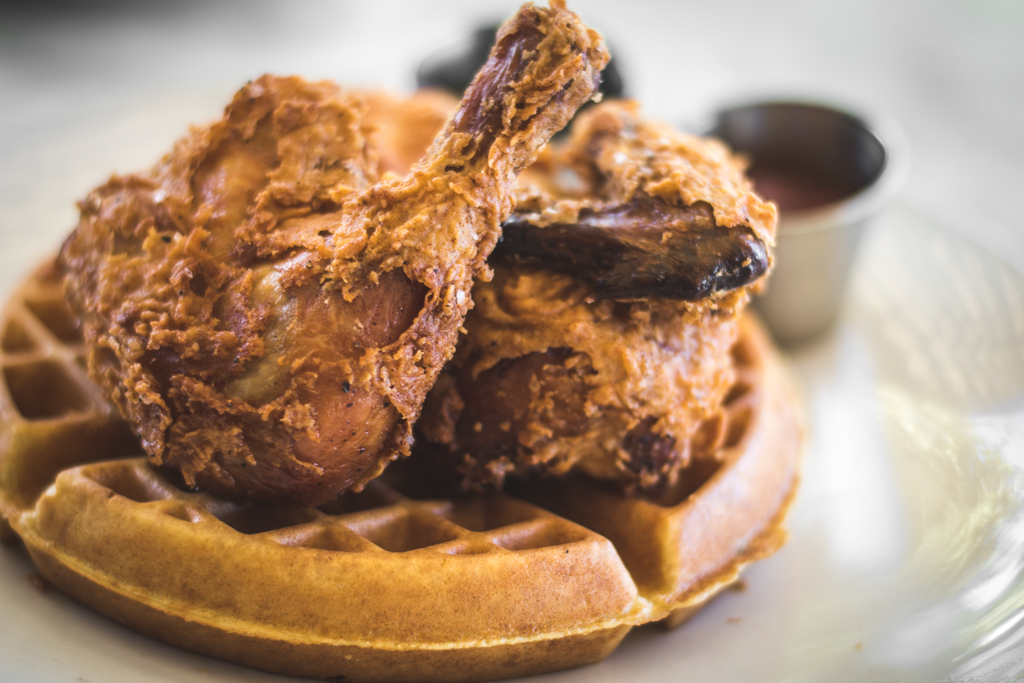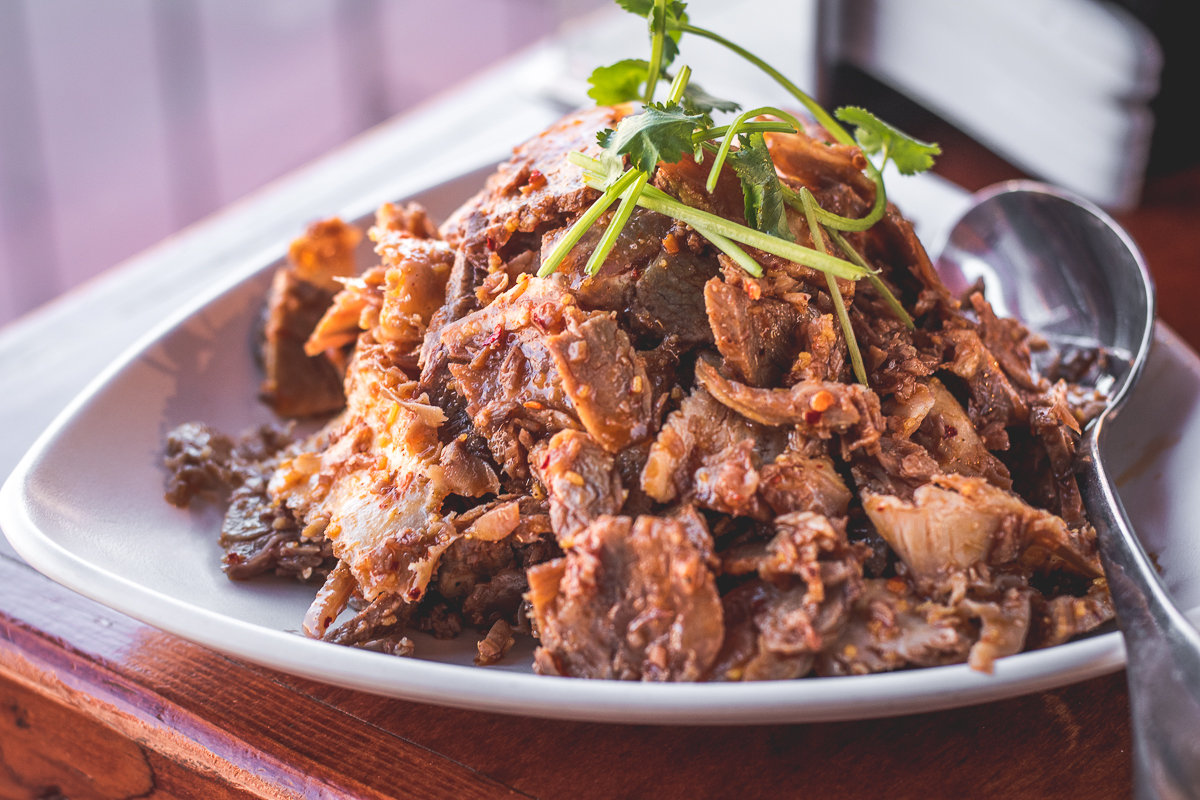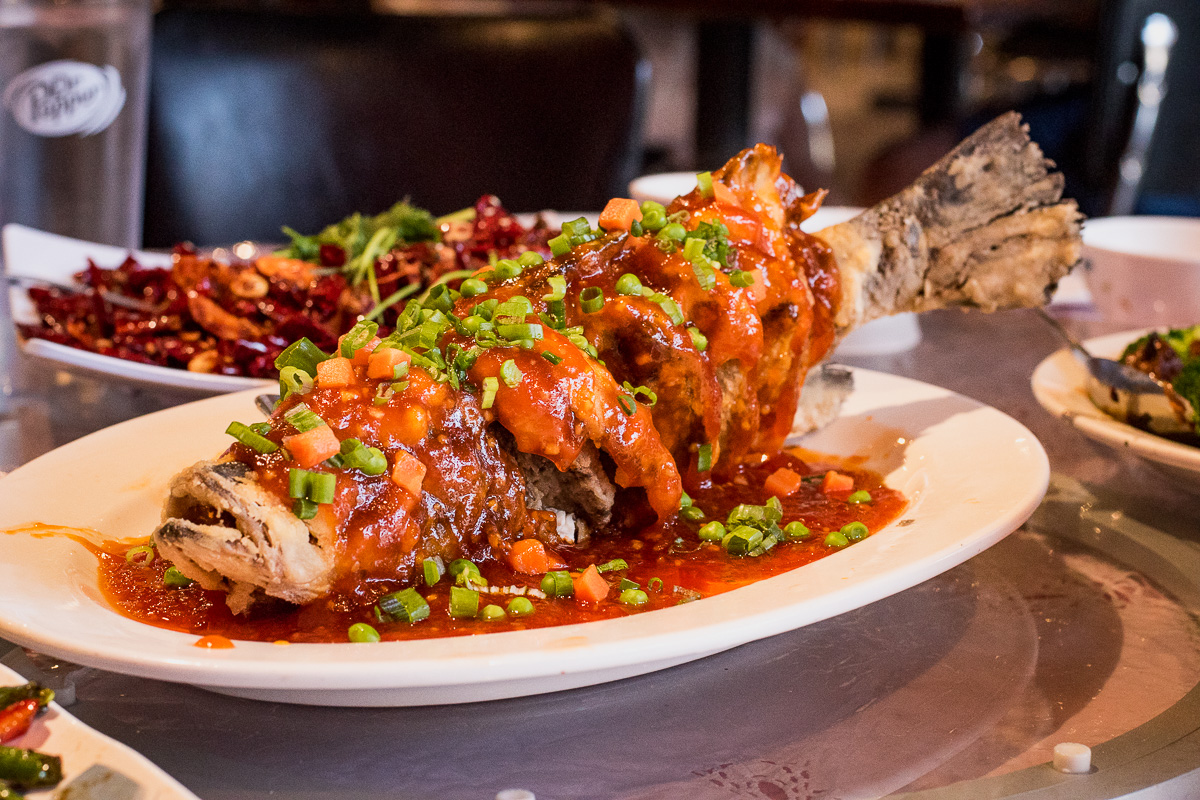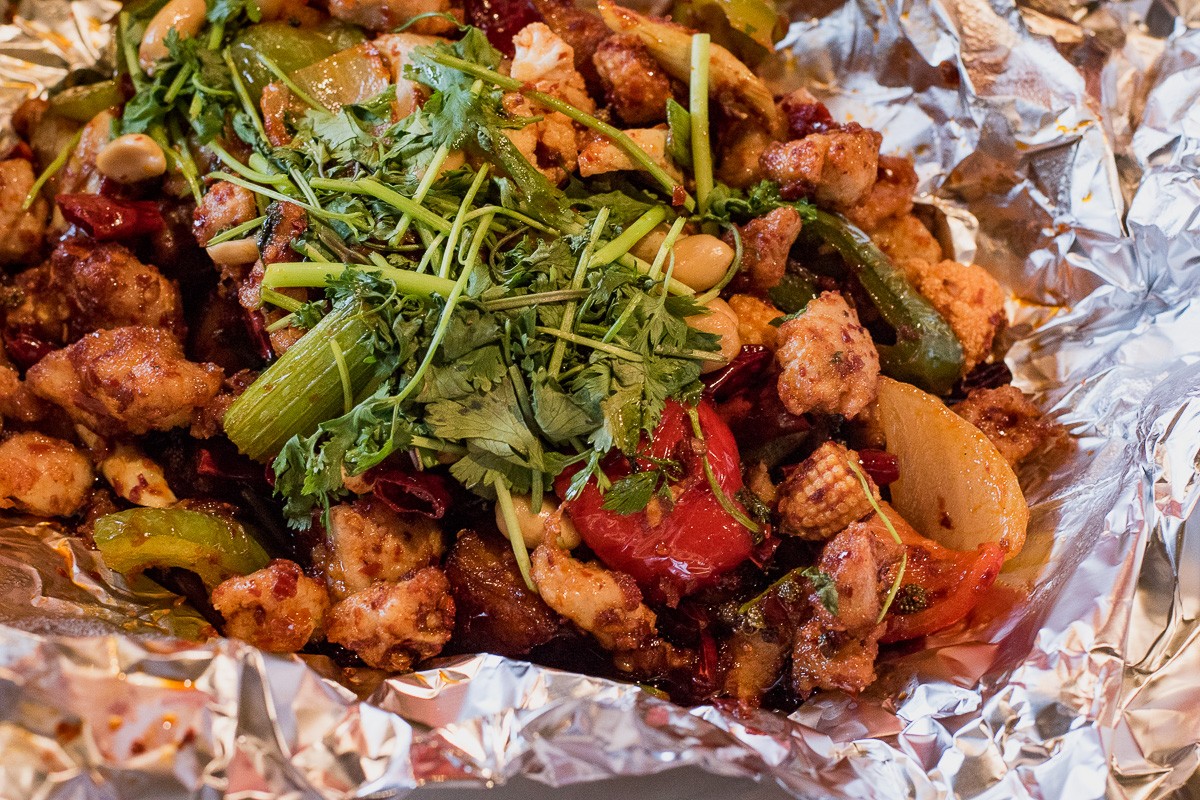
Try comprehending a Chinese menu at a hole-in-the-wall joint when items have no description and the server doesn’t speak sufficient English.
To be fair, Chinese menu translation is tough, especially when trying to make dishes sound tasty. Water-boiled beef and husband and wife lung pieces are literal translations, yet inaccurately descriptive for two fantastic Sichuan dishes.
Heck, even the word Sichuan is inconsistent across the board. Although Sichuan has fallen into favor nowadays, many restaurants still use Szechuan and Szechwan instead.
Hidden in plain sight at 1118 E. Sixth St., just south of the University of Arizona campus, Panda House bears an inconspicuous name and facade. A chalkboard A-frame features a menu exclusively written in Chinese, but walk into the restaurant to see U of A paraphernalia hanging all over the walls. The space previously held Brew of A Sports Grill, which was previously known as Schrier’s Sports Grill (still indicated as such by the parking signs behind the building).
U of A merchandise isn’t the only thing left over from the previous tenants — beer posters, a giant blackboard with a beer list, and the dozens of beer taps all appear out of place alongside the neon sushi sign and containers of soy sauce and hot chili oil. When the server was asked about the beer selection, they simply apologized for their lack of English skills and walked away after taking the food order.

Regardless of the communication barrier, Panda House is worth visiting for two reasons: Sichuan cuisine and house-made noodles.
Don’t let the Panda House name lead you to think of chain restaurant cloyingly-sweet dishes. While authentic Sichuan cuisine is complex and balanced, it’s most famous for its heat in two forms: piquant, conventionally hot peppers, and Sichuan peppercorns, which provide a tingly numbing sensation that feels like licking a battery.
Even though Fu Qi Fei Pian ($10.95) is under the “Chinese-Style Salads” section of the menu, don’t expect any vegetables beyond the cilantro garnish — it’s a pile of thinly-sliced chilled beef and offal tossed in hot chili oil. The slight gaminess is tempered by the spicy, potent oil. To balance the intense flavors and heat, order the garlicky Cucumber Salad ($6.95). Both plates are portioned for sharing.
For a basic introduction to the house-made noodles, order the Lo Mein ($8.95 – 10.95). While it doesn’t deviate from standard vegetables such as carrots and scallion, the fresh noodles elevate the take-out staple with a distinct tender chew.
To highlight the noodles in an even simpler preparation, order the Szechuan Cold Noodles ($8.95). Upon first glance, it looks like a pile of noodles with scallions and black pepper. Start stirring to reveal a pool of potent sauce. The seemingly simple dish suddenly becomes supremely slurp-able with flavors all across the spectrum: sweet and sour black vinegar, rich and spicy hot chili oil, salty and savory soy sauce and garlic, and nutty sesame oil.

The noodle soups also feature chewy fresh noodles. The Braised Ribs Noodles ($10.95) include chunks of ribs (including bones, the server warned, since it apparently catches some customers off guard) and bok choy. The broth isn’t complex, but simple and clean. The Mustard Noodles with Pork ($10.95) doesn’t feature spicy yellow mustard, but rather what appears to be pickled mustard greens. The greens provide a pungent contrast to the slivers of pork with a hint of earthiness.
If you receive the Sichuan menu and don’t speak the language, good luck. It also has no English translation, so hopefully, you have a Chinese-speaking friend to help — but items such as “fragrance octopus,” “two steel gongs,” and “ten burn this negative” simply don’t translate well. From what we can translate, we can recommend a few dishes.
Beggar’s Chicken in China is traditionally a whole chicken wrapped in lotus leaves and clay and baked for hours. The Panda House version, wrapped in foil, instead features chunks of chicken with baby corn, peppers, garlic, and a sauce with potent ma la and fragrant with allspice.
Chairman Mao’s Pork is also commonly known as red-braised pork. Here, the dish features tender, slightly sweet pork belly fragrant with star anise and ginger.

The House Spicy Prawns are fried whole, crispy enough to eat shell and all, so don’t peel the shells off to keep maximum flavor. Don’t try to eat the massive pile of chili peppers, but definitely snack on the toasty peanuts.
Last but not least, try the crispy Chong Qing Spicy Chicken. The chef is from Chongqing.
Service throughout each visit was attentive and speedy, even if the communication barrier left some questions unanswered. Water glasses remained full and the server seemed genuinely concerned about a mostly uneaten plate (I wanted to save the Fu Qi Fei Pian for breakfast since it’s tasty cold).
If you’re craving some boba or coffee, check out their coffee and tea shop next door.
Panda House is located at 1118 E. Sixth St. For more information, call (520) 888-8282 or visit pandahousetogotucson.com.
Jackie Tran is a Tucson-based food writer, photographer, culinary educator, and owner-chef of the food truck Tran’s Fats. Although he is best known locally for his work for Tucson Foodie, his work has also appeared in publications such as Bon...